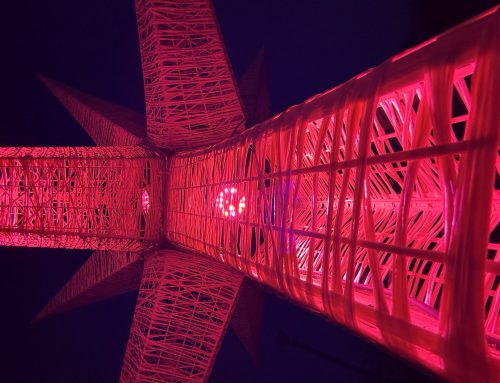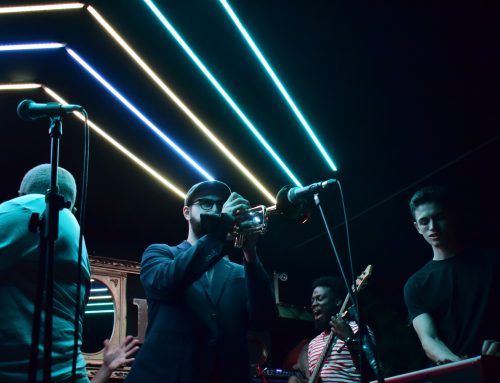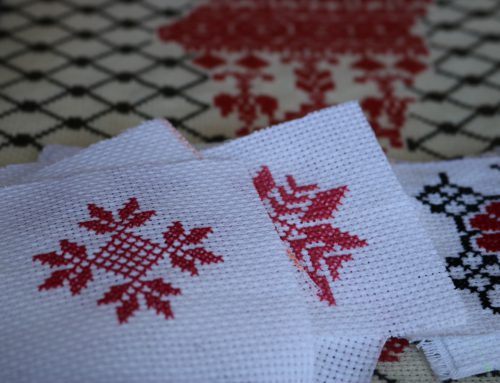BY Nadia Trudel & Isabeau Delacour
If you ever stop by a “Drink & Draw” event at Nouvel Établissement you might find yourself overwhelmed by the amount of people in the small bar, all sketching models posed on stage and in cages.
These monthly “Drink & Draw” events are a new initiative to bring together Montreal fashion lovers. It’s hosted by Lignes de Fuite, a talent incubator dedicated to supporting emerging fashion designers in Montreal.
“It was amazing how big of a turnout it was again, knowing that I don’t really have such a big community here yet, but it was great to see that a lot of people showed up and it was really nice to just see how everyone sort of interpreted everything,” says Roy Luo, a Toronto-born and educated designer who’s been working with Lignes de Fuite for the last year, shortly after moving to Montreal.
Milan Tanedjikov, a fashion design teacher at LaSalle College, created the Lignes de Fuite Instagram account in 2018. After informally helping out students (including Hannah Rose Dalton and Steven Raj Bhaskaran of Fecal Matter and KNWLS Co-Creative Director Alexandre Arsenault) for a few years, he started documenting the design process of the young designers he was working with.
Over the years, Lignes de Fuite has transformed into a formal non-profit; one that hosts events, offers short courses, apprenticeships, and publishes a coffee table book. Although Lignes de Fuite describes itself as a talent incubator, a better word to describe it might be platform, it’s the one that keeps coming up when Milan talks about the initiative.
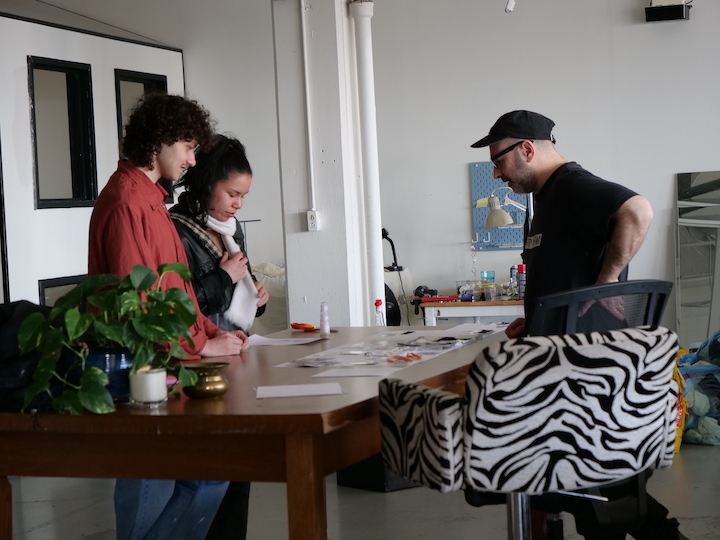
Milan Tanedjikov works with students at a studio in the Plateau-Mont-Royal. Photo by Nadia Trudel.
“I feel like without a platform, without giving a voice to these students they are not motivated to practice,” Tanedjikov explains. “They don’t have any positive financial feedback, and then they just kind of disappear and they stop.”While Montreal has acquired a reputation as a small, but mighty creative hub, its fashion industry hasn’t built an international presence the way other aspects of Montreal culture have.
“We’re seeing that since 2018-2019, primarily because of a rise in ethical consumerism, production of medical material during the pandemic, we’ve seen a rise in the production of clothes in Montreal. An increase of 5,000 jobs in the manufacturing sector between 2019 and 2021” says Mathieu St-Arnaud, the executive manager of Mmode, a Quebec fashion industry “cluster” launched in 2015.
“As much as production was relocated in the late 90’s and early 2000’s, it’s being relocated back to Montreal. And we feel that for certain brands it’s interesting to produce their garments in Quebec.”
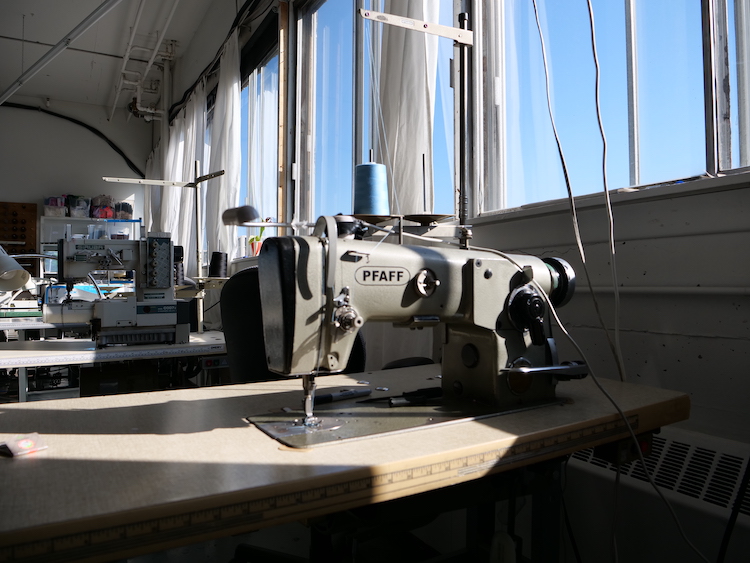
A vintage sewing machine at a studio in the Plateau-Mont-Royal. Photo by Nadia Trudel.
As an industry cluster, Mmode is tasked with allocating resources provided by the provincial government.
“They have a very large mission; they have to save the production sector, they have to help the retailers on St. Catherine, they have to help students, emerging designers,” says Tanedjikov.
“So they have this enormous mission. I imagine they want to address the different issues, but at the end of the day, it’s less resources for emerging designers and students from what we had before when we had the Fondation Mode.”
Under their mandate to grow the Quebec fashion ecosystem and make it more competitive, Mmode bought the name “Montreal Fashion Week” from the defunct Association des Créateurs de Mode du Québec in 2019, and relaunched the event in 2021.
Mmode communications director Jhan Boyer Gignac describes previous incarnations of Montreal Fashion Week as “very exclusive, very buyer oriented, and aimed at a very niche audience.”
“For fashion week the idea was to propose a new concept, instead of making it very exclusive, aimed at a small clientele for a brief week under the traditional runway format. We wanted to open it up, make it inclusive and accessible for both participants and the public.”
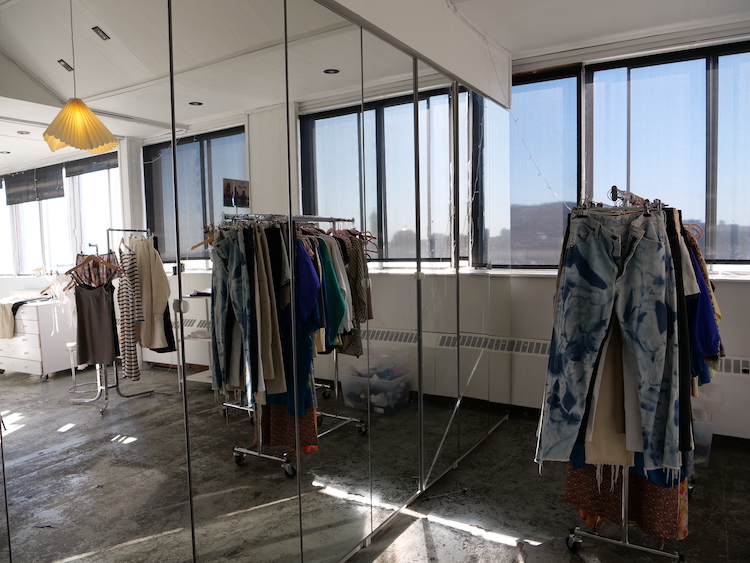
Racks of clothing at a studio in the Plateau-Mont-Royal. Photo by Nadia Trudel.
However, not everyone is convinced about this alternative approach.
“I feel that the way they approach it is like a holiday, it’s all just a week to celebrate fashion in Montreal and I don’t see it as like a true fashion week, which the mission is basically to provide a platform and provide actual resources for people to use to present their collection,” says Tanedjikov “I see it as kind of a…I’m not convinced yet.”
“We are indeed really strong in creating events in Montreal, there is a lot of investments there but it doesn’t serve the image if we only stay local. That money could be put in helping brands showing in other known Fashion Weeks to then really create a long term effect that Montreal could be a fashion city and then attract big players of the industry worldwide to take Montreal as a serious fashion industry,” says Marie-Ève Lecavalier, the Montreal born creative director and founder of LECAVALIER.
A good fashion week is synonymous with any “fashion city”, the “Big Four” include Paris, Milan, London, and New York. For most young designers, the goal remains getting to those cities, meaning talent might come to Montreal for its schools and more affordable studio spaces but it rarely stays.
Lecavalier, who has worked in Paris, Antwerp, and New York doesn’t believe there are enough resources to be successful in Montreal.
“I would have loved to stay in Montreal, as there is indeed a big support in terms of community […] But I won’t be staying here long-term because of the kind of industry that I am in, which is more based in Europe. I have tried here but I got tired of keeping explaining myself to find ways to get fundings, which here seems to be distributed to more commercial companies and product but where craftsmanship is not understood. At the level that I am now, it’s just not sustainable for me to stay in Montreal as there is also no high hand industry to work in.”
“I’ve always thought that Montreal should attract people to come and develop their early brands here or come to school here, and then eventually come back in these like bigger markets where there’s more opportunity, just from the sheer amount of people,” says Tanedjikov.
“It’s not that here in Montreal, there’s not people that enjoy emerging designer fashion, or that don’t buy. It’s just that, let’s say there’s a community of 1,000 people, in New York, there’s a community of 100,000 people, the city makes the opportunity much more viable financially.”
Luo seems to echo this idea, “I think we’re at a point where we’re able to embrace small designers, and I think that’s really inspiring for me.I really see that it is feasible for me to have a career here. I think it just has a lot of challenges that I kind of have to start embracing. But I definitely do think that there is a future, and I guess that’s what I love about the city? Well, first, I love my community and I love how open it is to creatives.”
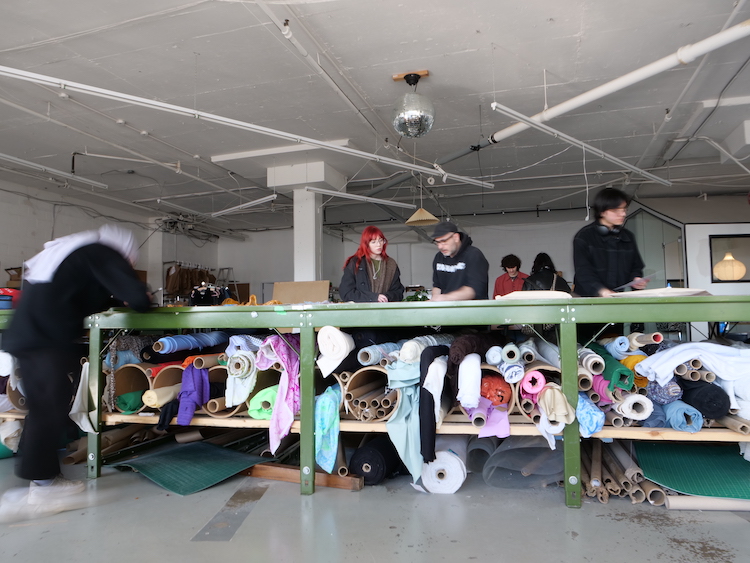
Lignes de Fuite Vol.4 fashion design mentorship participants work with founder Milan Tanedjikov. Photo by Nadia Trudel.
The benefit of being a smaller city and therefore, fashion community, means the community is tighter-knit according to both Tanedjikov, Luo, and Lecavalier.
“In Toronto, the fashion communities are very specific to each school […] Montreal being a lot geographically smaller and socially smaller. It helps that people are a lot more connected, especially because there are profs that are shared between both UQAM and LaSalle,” explains Luo.
“I think it’s it’s all about collaboration, too in the end. If you don’t have access to something it doesn’t hurt to reach out and find an artisan or find another maker who may specialize in something. I think that’s definitely something that’s great about the city is that there are a lot of creatives, so you’re able to ask for help and you’re able to reach out and access equipment or supplies or information that you might not know beforehand.”
“I think Montreal is already recognized as a good fashion city in a more novel, underground way. I think it’s hard to be like… you want to be recognized, but then you have to really think about whose opinion matters?”
